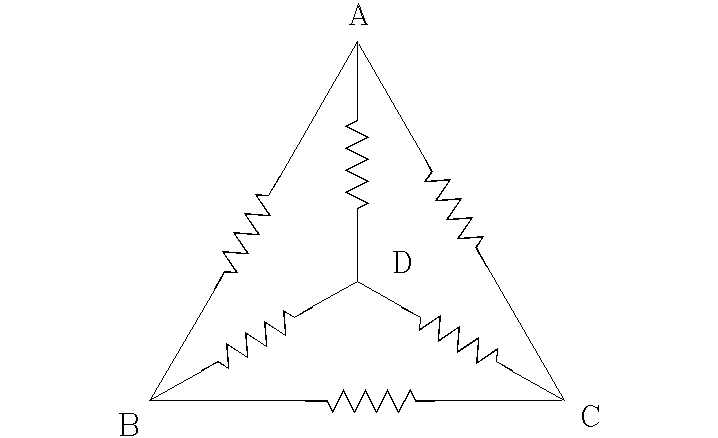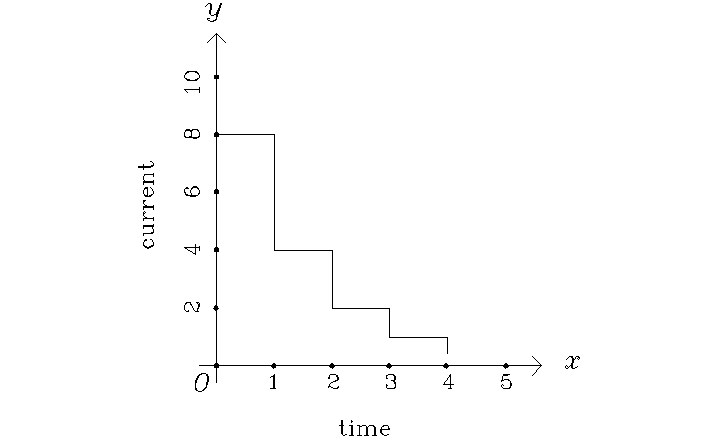SCHOLASTIC APTITUDE TEST 2000
PHYSICS
| Time: ONE Hour |
Max. Marks: 60
|
- Answers must be written
either in English or the medium of instruction of the
candidate in high school.
- Answer all the questions
in the booklets provided for the purpose.
- There will be no
negative marking.
- The relevant
working in arriving at an answer has to be shown
wherever required. However if the answer can be arrived
at without detailed working, write only the answer
- Use of calculators or
graph papers is not permitted.
- All questions carry
equal marks
- A body floats with half its
volume submerged in a liquid A. The same body floats with
three fourth of its volume submerged in a liquid B. Equal
masses of these two liquids are mixed to form a
homogeneous mixture and the body is floated in this
mixture again. The fraction of the volume of the body
that would be seen above the surface of the mixture is .
- A line of cyclists
separated by 50 m are travelling along a road at a
constant speed of 4 m/s. Another cyclist is riding
his bicycle at a constant speed of 6 m/s. The time
taken by him to cross 10 cyclists is
if he is travelling in the same direction as the others
and
if he is travelling in a direction opposite the others.
- A particle starting from
rest accelerates at 2 m/s2 for some time and
then travels uniformly and passes a point 175 m from the
starting point 20 s after start. The velocities of the
particle at the moment of passing the 20th m
and 30th m marks are
and .
- A body is dropped from a
certain height. 2 seconds later another body is projected
vertically upward from the same point at 20 m/s. The
distance between the first and second bodies 5 seconds
after the projection of the second body is .
( acceleration due to gravity = 10 ms–2
)
- A boy drops stones from the
roof of a building on to the ground 9 m below. The first
stone released by him strikes the ground at the moment he
has just released the fifth stone. The second, third and
fourth stones are at heights of
,
and
above the ground at this moment. ( acceleration due
to gravity = 10 ms–2 )
- A pendulum has a time
period of 2 s at a place where acceleration due to
gravity is 9.83 m/s2. To have the same
time period of 2 seconds at a place where acceleration
due to gravity is 9.78 m/s2, it's length must
be
.
- A beaker with negligible
water equivalent contains some water of mass m. Some mass
of ice at 0° c is added to this water. The
mass of ice added being equal to half the mass of water
in the beaker and all the ice added just melts. If half
of this mass of ice were to be added, the final
temperature would have been .
- Suppose gravitational force
between two masses were to be given by
 where
k is some constant. Two equal masses attract each other
with a certain force when the distance is d. If each of
the masses is doubled, the distance between them must be
increased
times for the force to remain the same as earlier.
where
k is some constant. Two equal masses attract each other
with a certain force when the distance is d. If each of
the masses is doubled, the distance between them must be
increased
times for the force to remain the same as earlier.
- If end correction is
neglected it is possible to obtain resonance for lengths
of air column which are in the ratio 1:3:5:7:
………….. ( This ratio is an
approximation ). A meter long tube with its lower end
closed is held vertically. A vibrating tuning fork of
frequency 480 Hz is held at the mouth of the tube and
water is slowly poured in to the tube. Shortest and
longest lengths of the water column for which resonance
is obtained are
and
. ( Velocity of sound in air is 345.6 m/s)
- A candle flame and a screen
are 180 cm apart. A lens is placed between them. For a
certain position of the lens a twice magnified clear
image is obtained on the screen. The lens is now moved
away from the candle through 30 cm. To obtain another
clear image on the screen, the distance through which the
screen has to be moved is
and the new magnification of the image is
.
- A ray of light incident
normally on one face of an equiangular prism, gets
internally reflected from the second face and emerges
through the base of the prism. The angle of deviation of
the ray is .
( Draw a neat ray diagram. )
- 110 Particles are chasing
each other on a circular path of radius 7 m. The speed of
any particle is 2 m/s. Number of particles crossing any
radial line every second is .
If each of the particles carries a charge of 4 microColoumb,
the average current in the path is .
- All the resistances shown
are equal. With resistance between A and D removed and
the resistance between different points is measured. If
the resistance between points B and C is R, the
resistance between points A and B would be
- A potential difference
applied to the ends of a wire causes a certain current to
flow through it and a certain amount of heat to develop
in it. The wire is stretched to obtain a new thin wire of
half the original thickness. If the same potential
difference is applied to the ends of the new wire, the
heat developed _______________ times and the current
flowing __________ times.
- The current in a wire of
resistance 10 Ohm varies as shown. The current remains
constant for one second and in the next second it is half
of the value in the previous second. If the initial value
of the current is 8 A, the heat produced in the wire in 5
seconds is joule,
and the charge that flows across any section of the wire
in this time is .
- A house uses 5 lamps of 40
W each for 5 hours a day and an electrical heater of 1000 W
for 1 hour a day. The energy consumed in a month of
30 days in kWh is .
The mass ( in milligram ) that is equivalent to this
energy is
.
- Magnetic field produced by
a circular coil of radius R and having N turns carrying a
current 'i'is given by
 . The magnetic
field is perpendicular to the plane of the coil and is
directed out of the plane if the current is anticlockwise.
Two concentric coils made of wires of same length 'L' are
made in to coils of radii R and 2R and have same current
'i' flowing through them in the same sense and are
in the same plane. The magnetic field at the center of
the coils is
. (Permeability of free space m o= 4p x 10–7 Hm–1)
. The magnetic
field is perpendicular to the plane of the coil and is
directed out of the plane if the current is anticlockwise.
Two concentric coils made of wires of same length 'L' are
made in to coils of radii R and 2R and have same current
'i' flowing through them in the same sense and are
in the same plane. The magnetic field at the center of
the coils is
. (Permeability of free space m o= 4p x 10–7 Hm–1)
- An electron starting from
rest is accelerated through a potential difference of 182
V. The kinetic energy (in joule ) gained by it is
and it's velocity is .
( mass of electron m = 9.1 x 10-31
kg, charge of electron e = 1.6 x 10-19
C ).
- A charged particle moving
south west at right angles to a magnetic field
experiences a force vertically upwards. This charged
particle would not experience any force if it moved in a
direction .
- B and C are constituents of
a nucleus A. The binding energy of nucleus A having three
nucleons of type B and four nucleons of type C in MeV is .
(Mass of B = 1.00733 amu, Mass of C = 1.00867
amu and Mass of A = 7.01586 amu)
 where
k is some constant. Two equal masses attract each other
with a certain force when the distance is d. If each of
the masses is doubled, the distance between them must be
increased
times for the force to remain the same as earlier.
where
k is some constant. Two equal masses attract each other
with a certain force when the distance is d. If each of
the masses is doubled, the distance between them must be
increased
times for the force to remain the same as earlier.
 . The magnetic
field is perpendicular to the plane of the coil and is
directed out of the plane if the current is anticlockwise.
Two concentric coils made of wires of same length 'L' are
made in to coils of radii R and 2R and have same current
'i' flowing through them in the same sense and are
in the same plane. The magnetic field at the center of
the coils is
. (Permeability of free space m o= 4p x 10–7 Hm–1)
. The magnetic
field is perpendicular to the plane of the coil and is
directed out of the plane if the current is anticlockwise.
Two concentric coils made of wires of same length 'L' are
made in to coils of radii R and 2R and have same current
'i' flowing through them in the same sense and are
in the same plane. The magnetic field at the center of
the coils is
. (Permeability of free space m o= 4p x 10–7 Hm–1)